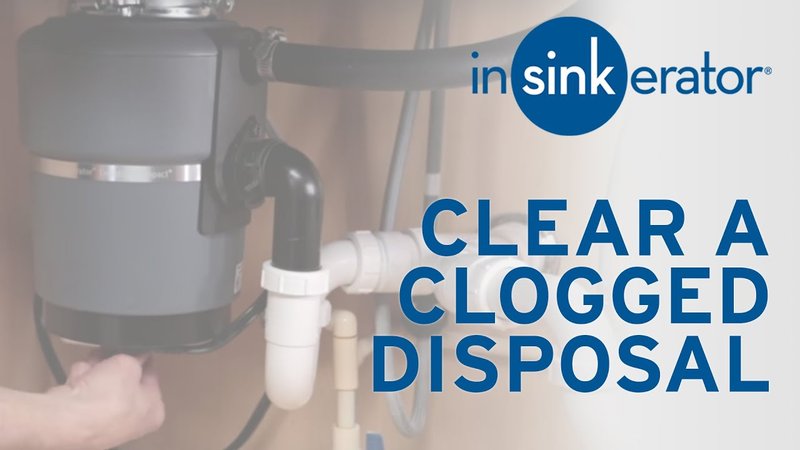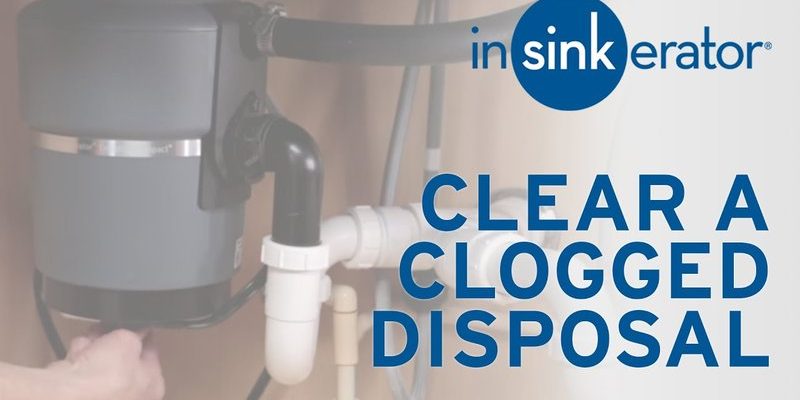
The E1 error code signals that your Insinkerator garbage disposal is experiencing a motor overload. Think of it like when your computer freezes up because you’ve asked it to do too much at once. It’s a built-in safety measure to prevent damage to the motor. But don’t worry! Like rebooting a computer, there are straightforward ways to reset and prevent this error from happening again. Let’s explore these steps in detail, making sure you can keep your disposal running smoothly.
Understanding the E1 Error Code
At its core, the E1 error code functions like a red flag for your disposal, suggesting that it’s working too hard. This might happen when something tough—like a bone or fibrous vegetable peels—jams the motor. Imagine trying to mix cement with a hand mixer; it’s just too much for the machine to handle, and it needs relief. The motor cut-out is designed to prevent permanent damage, so while this error can be frustrating, it’s actually working to protect your appliance.
You might be wondering what causes this overload. Well, it could stem from a variety of sources. Overloading the disposal with too much food at once is a common culprit. Also, not running enough cold water while grinding can lead to overheating. Like a car engine needs coolant, your disposal needs water to keep things running smoothly. If you’re in the habit of tossing in large, unchopped pieces of waste, reconsider breaking them down into smaller bits first.
Knowing is half the battle. By understanding what triggers the E1 error, you can start implementing methods to avoid it. It’s kind of like knowing that leaving your car lights on will drain the battery—you just need to remember to switch them off every time you park.
Simple Steps to Prevent the E1 Error
Alright, let’s dive into some practical steps to keep the dreaded E1 code at bay. First off, let’s talk about feeding your disposal. Think of it like feeding a pet—you wouldn’t dump an entire bag of kibble in its bowl. Instead, you’d portion it out. Similarly, feed small amounts of food waste into the disposal, allowing the blades to grind efficiently without straining.
Next, always use cold water when operating the disposal. Why cold water? Hot water can melt fats and grease, which might then solidify further down the drain, causing blockages. Cold water helps keep these substances solid, allowing them to be ground up and flushed away more effectively.
It’s also a good idea to do a regular “flush” with a gentle cleaner. Ever heard of the saying, “Prevention is better than cure”? Running a mixture of ice cubes and vinegar through the disposal every so often helps to break up residue and sharpen the blades, much like brushing your teeth keeps them clean and healthy.
Maintenance Tips and Tricks
So, you’ve got the basics down. Let’s take a quick look at ongoing maintenance. Beyond daily habits, consistent care ensures longevity and performance for your Insinkerator. Regular inspections can make a world of difference, akin to checking your tire pressure and oil levels. Ensuring that there isn’t built-up grime or jammed debris can prevent everything from minor issues to major malfunctions.
Clean the disposal thoroughly once a month. You can do this by turning off the power, reaching in (using tongs, not your hands), and removing any debris stuck around the blades. A toothbrush can be handy for scrubbing areas that are hard to reach. It’s like giving your disposal a spa day.
Finally, consider a professional tune-up now and then. A technician can perform a detailed inspection and servicing, identifying any lurking problems before they escalate. It’s similar to taking your car in for servicing, and could prevent you from being caught off-guard by sudden breakdowns.
Final Thoughts
There you have it! By understanding what causes the E1 error and implementing these preventative measures, you can keep your Insinkerator humming along happily. Remember, it’s all about taking small steps that add up to big improvements over time. Like tending a garden, a little attention and care will yield a thriving, problem-free disposal system. Now you can confidently handle any kitchen cleanup, knowing that the dreaded E1 error will be a thing of the past. Happy disposal-ing!
